Questionthanks alot for your advice i have wood chip as a substrate but it is quite large bits is this ok, also i dont really understand gallons i have both in a 2 foot by 1.5 by 1.5 with lots of logs and plants is this big enough to divide up or will i need a new viv?
-------------------------------------------
The text above is a follow-up to ...
-----Question-----
help me PLEASE i am extremely scared my 2 geckos r going to die i have had them for about 1.5 years but recently (over the last 2-3 months) they have not been eating well they both have lost the fat in there tail and are extremely skinny i have tried cutting the wax worm in 2 and even breaking the legs of the crickets grouse i know but i am desperate i have tried various sizes but nothing! i think i am running out of time, they are both males but got on great befor no fighting and both were fat!!! please please please help.
-----Answer-----
Chances are, since Leos are nocturnal(active at night) you aren't seeing them fighting...two MALE geckos CANNOT get along....if fighting doesn't kill them, the stress of being with each other will...
For the health and safety of both of your leos, they each need to have their own cage and set up.
You may want to consider having a fecal check done at your vets to make sure there are no parasites.
Also, you might want to consider a pro-biotic...pro-biotics are basically gut bacteria boosters. You can use Acidophilus capsules(available at healthfood stores, wal mart, pharmacys) which you can open up and add some to some babyfood fruit(about 1/8 capsule) They generally will lick at the babyfood even on your finger. You can repeat this for 3 days. That should boost their gut bacteria which will boost their appetite.
You can also use a product called "jump Start"(available at some pet stores and on line) which can help. Be sure to feed your insects (gut load) and to use the correct calcium supplements on your leos to prevent calcium deficiencies in them also...
Also, if, with trying the above things,(SEPARATING THEM) your leos do not start eating in a week or less, its vital to get them to a vet for a check up!!
I've included a basic care sheet on the leopard gecko so you can double check your temperatures, etc.
Of course none of this information will help unless you get your leos separated.
BASIC CARE FOR A LEOPARD GECKO
Leopards are pretty easy to care for but they do need
special care. Here are some of the basic needs of your
gecko.
HOUSING: The need to have at least a 20 gallon long tank for
one Leo. This needs to have a secure fitting screen top...they can be quite the escape artists!!! They need to have a humid hide box.You can make
this with something as simple as a small plastic dish with a
hole cut in one side and a small mesh bag filled with some
Sphagnum moss, coconut bark or Peat moss that you mist.
I made mine out of the small plastic folgers coffee containers...I cut an opening in the lid..and put the moss in..they LOVE it. I use the terrarium moss in mine.
I use that on the warm side of the tank. Be sure to provide a cool hidebox on the other end. I also provide a mid temperature hide...which is in the middle of the tank.I use the critter caves which you can purchase. NOT the ones that have heat in them!!!!
Provide secure climbing areas for your gecko. Fake plants, rocks and branches are all fine to use. be sure there are no wires or sharp ends to any fake plants you use.
SUBSTRATE:(that's the stuff on the floor of your tank) News
paper, lizard carpet or paper towels work great and are easy
to clean and are much safer than any loose substrate. Sand or other loose substrate is not recommended as that they can be deadly to the leo when it is ingested(eaten, even by accident while eating their insects)...
TEMPERATURES: They need a warm area of 88-92 degrees and a
cooler area in the upper 70s, low 80s. At night their
temperature can drop to the low to mid 70's.
Never use a hot rock for a leopard gecko...or any reptile.
They can severely burn any reptile. You can use a heating
pad under the tank,under tank heater, or you can use a regular household
lightbulb in a dome fixture with a ceramic socket in it to
keep the warm area at the 88-90 degree area.At night, no white light. If room temperatures stay above 70 degrees, no extra night heat is needed. The undertank heater or heating pad should cover about 1/3 of the tank....be sure to raise the tank up about 1/4-1/2 inch off the stand when using an undertank heat source to prevent heat build up which can cause the glass to break and hot spots in the glass. Be sure to have a good layer of newspaper, carpeting or, even a thin flat rock(such as tile) on top the area that the undertank heat source is placed...if you use a thin rock or tile, it helps to distribute the heat very well.
You can use the special nighttime lights that are designed for reptiles. I like using a ceramic heat emitter on a thermostat for nighttime heat.
DO NOT use black lights or party lights as they can cause eye damage!!!!
The wattage you use will vary based on room temperature and size of tank.
LIGHTING: Leopard geckos do not need UVB lighting but it does not hurt them to give them uvb. They should have some type of light during the day, be it a uvb tube, regular florescent light, reptile day light or regular household lightbulb. NO white lights at night!!!
FEEDING: Geckos should not be fed crickets or other insects that are bigger than the space between their eyes. Crickets and other food items such as silk worms, super, and an occasional treat of a wax worm, need to be dusted with a calcium supplement two times a week and also they should have a small dish of calcium in their tank. I use the lid of a milk jug for the little dish of calcium in their tank. For dusting the insects, Use a calcium with no added phosphorus.
Insects must be gut loaded(fed) for at least 48 hours prior to feeding your gecko. Remove any uneaten crix or superworms after 15-20 minutes..... Place a piece of cut potato in the tank so that if you have missed any uneaten insects, they will eat the potato instead of nibbling on your gecko!!!
You have to be sure to feed your crickets the right foods
before feeding them to your gecko. If your crickets/insects are not healthy and well fed, your gecko will not get the nutrition
he needs. You can gut load your crickets greens, veggies, cereals or specially designed commercial foods for crickets or the insects you are feeding.
Be sure to have a small dish of clean water for your gecko
at all times!!
You can offer them some baby food or fruits on occasion ...
Mine will even eat a small piece of watermelon now and then.
WATER: always provide a dish of drinking water. If you choose to mist your gecko to drink, its best to not get the tank too wet as that they do not do well with higher humidity. Sometimes its better to take your leo out of their tank to mist them to get them to drink!!!
HANDLING: Some geckos enjoy being held...others prefer not to be handled at all. Be sure to be very gentle when holding your leo and NEVER grab them by the tail! Their tails are extremely fragile and will break.
I do suggest finding a vet that can treat reptiles BEFORE you actually need one!!! To find a vet that is able to care for reptiles:
http://www.anapsid.org/vets
http://www.arav.org/Directory.htm
For more information on leopard geckos:
http://www.thegeckospot.com/leocareindex2.html
http://www.drgecko.com
If you have any more questions, or don't understand something, please let me know!!
AnswerI'm Glad to be able to help you !!!
A 20 gallon tank is 30 inches long, 12 inches wide and 12 inches high.... the viv you have would be perfect for one leopard gecko!! Its too small to divide though. Also, when you set up your 2nd viv...be sure that it is in an area that they can't see each other. If you are limited on space, and need to but them right next to each other, any thing can be used to they don't see each other..from newspaper to one of the backgrounds that are made for fish tanks.
I don't like the bark because it can harbor bacteria and parasites..and can be a pain to clean. Its also pretty rough on a leopard geckos sensitive skin and it can cause scratches to them.
Please let me know how it all works out for you!!!

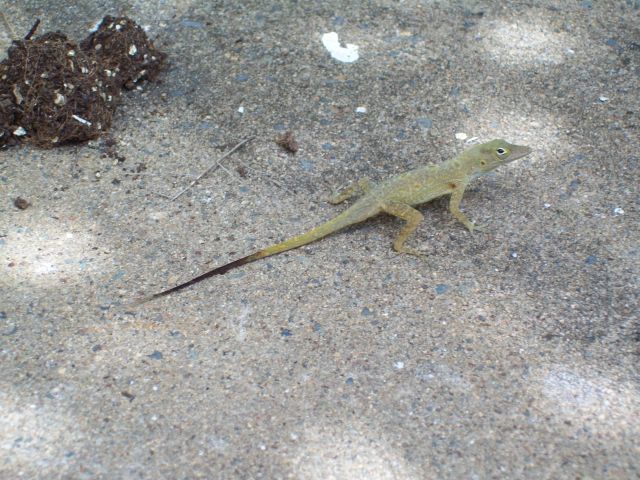 identifying lizards
Question
lizard
I live on the island of St. Thomas and
identifying lizards
Question
lizard
I live on the island of St. Thomas and
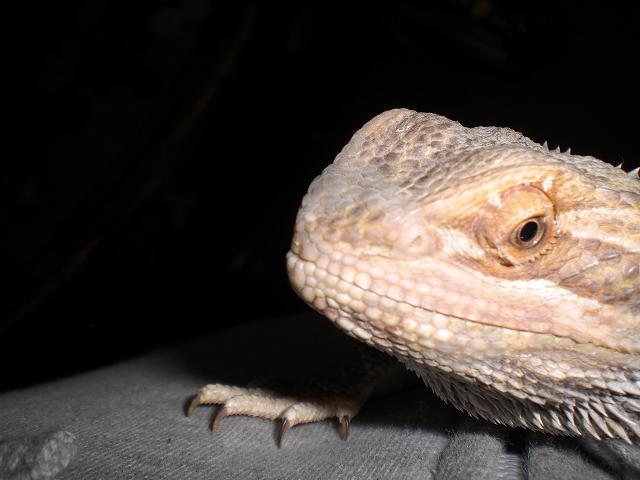 spots
Question
my dragon
In the past week my bread dragon has
spots
Question
my dragon
In the past week my bread dragon has
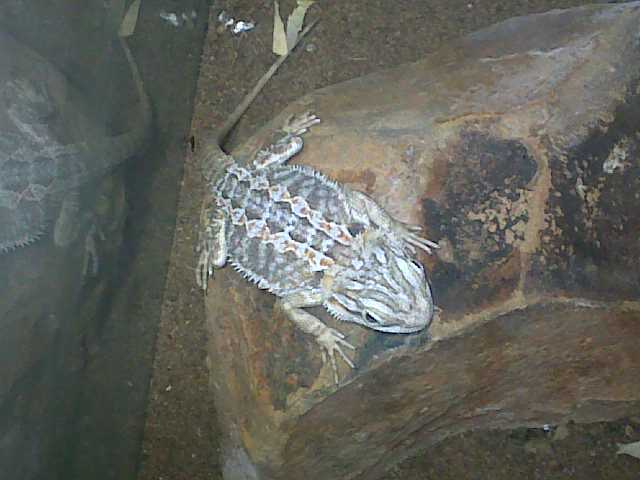 aggresive bearded dragon - sandfire
Question
bearded dragon
i think it is a female.my beard
aggresive bearded dragon - sandfire
Question
bearded dragon
i think it is a female.my beard
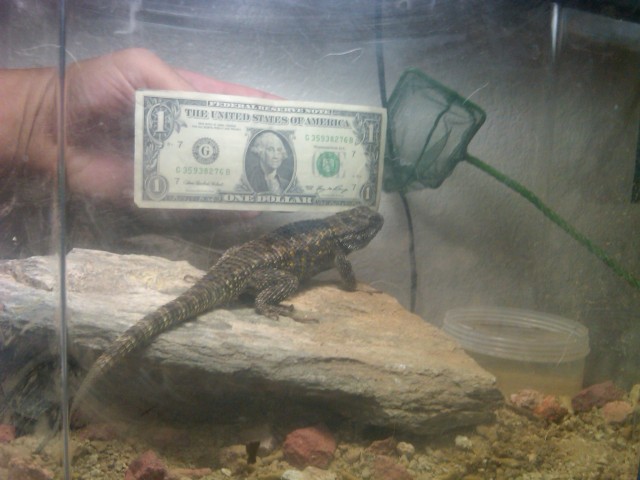 Wild Desert Spiny Lizard vs. My Cat
QuestionDesert Spiny Lizard
QUESTION: (Phoenix,
Wild Desert Spiny Lizard vs. My Cat
QuestionDesert Spiny Lizard
QUESTION: (Phoenix,
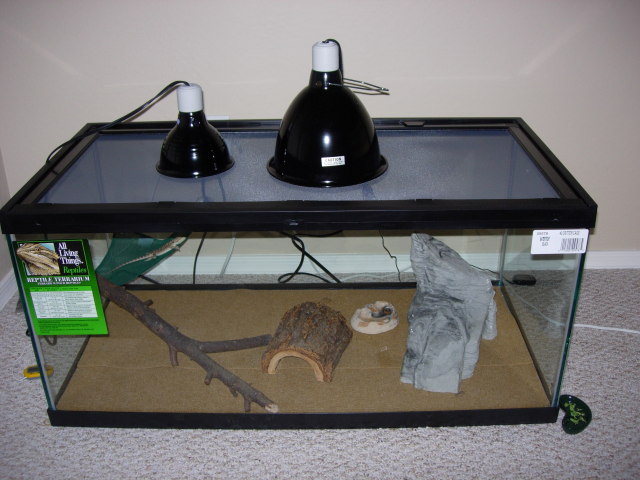 Bearded Dragon questions...
Question40 Gallon Terrarium wi
QUESTION: I have
Bearded Dragon questions...
Question40 Gallon Terrarium wi
QUESTION: I have